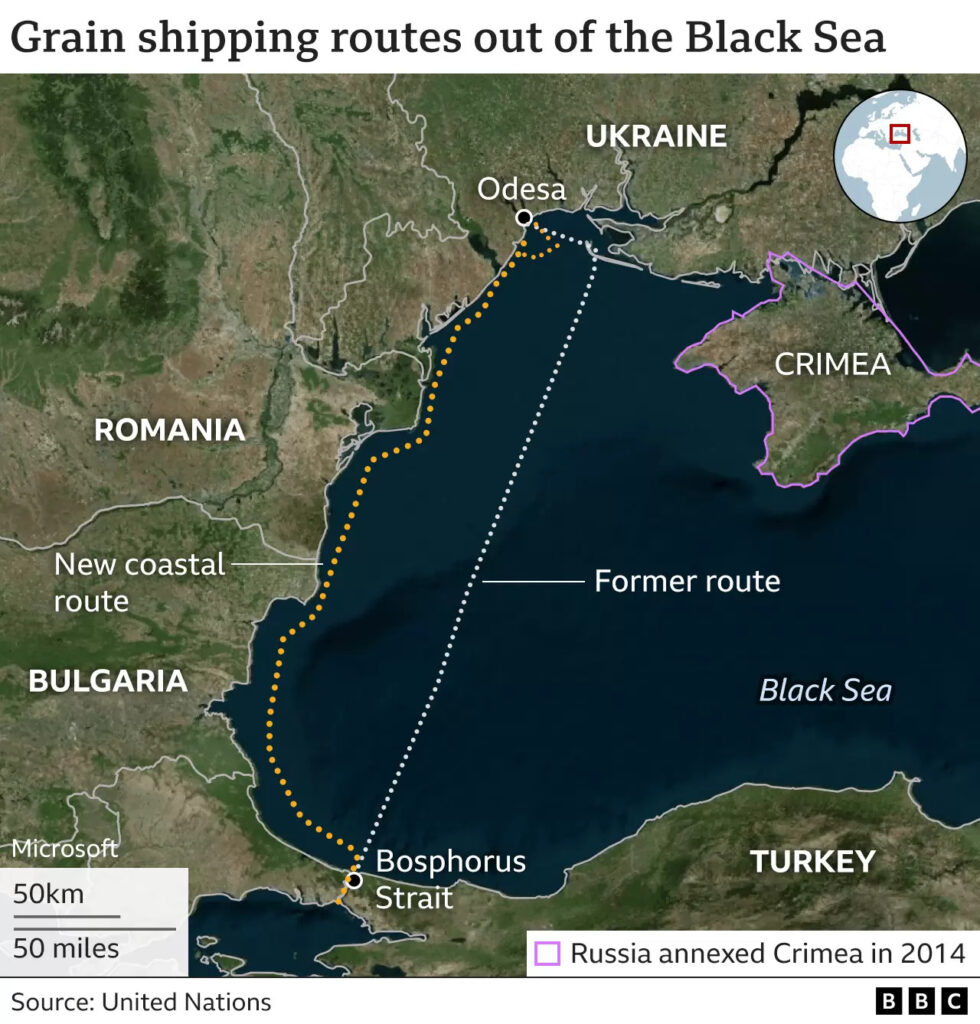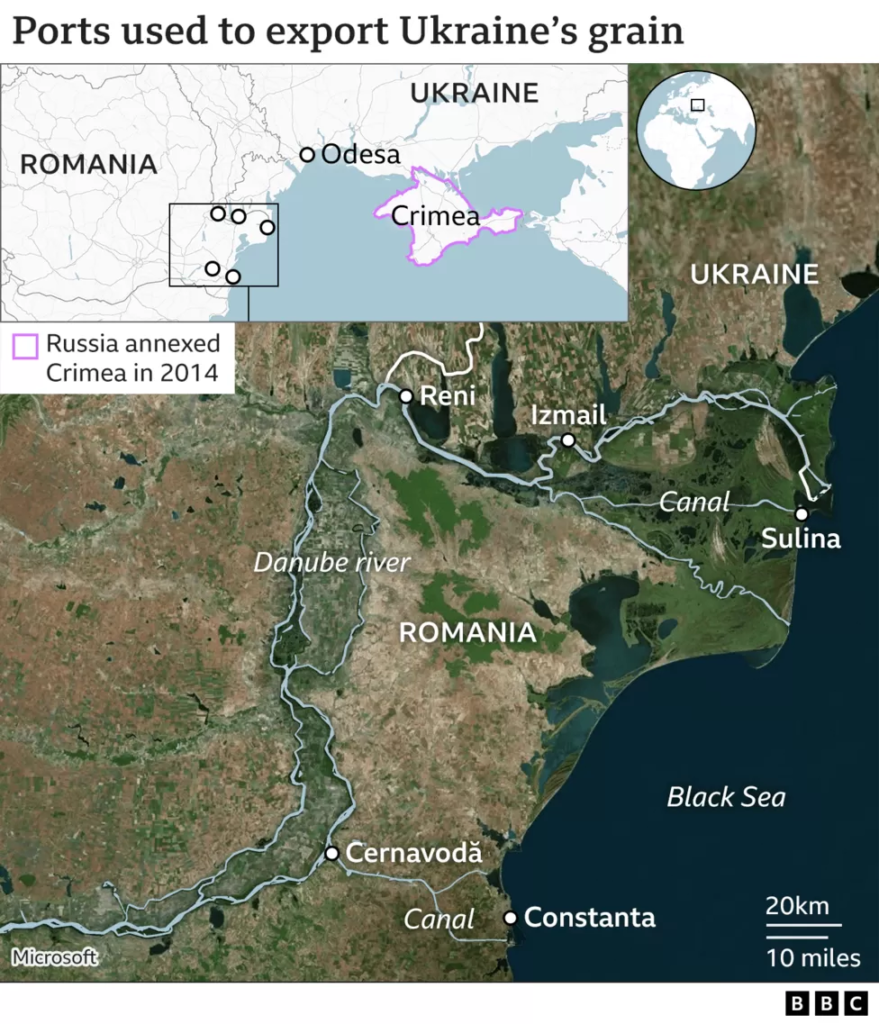Ships carrying grain are again sailing from Ukraine’s Black Sea ports, despite Russia pulling out of a deal which allowed them to pass safely through the sea.
They have been following a new route, around the western coast.
What was the grain deal?
Ukraine is one of world’s biggest suppliers of crops such as sunflower oil, barley, maize and wheat.
When Russia invaded in February 2022, its navy blockaded the country’s Black Sea ports, trapping 20 million of tonnes of grain meant for export.
This caused world food prices to soar and threatened to create shortages in Middle Eastern and African countries, which usually import a lot of food from Ukraine.

In July 2022, Russia and Ukraine agreed a deal – brokered by Turkey and the UN – allowing cargo ships to sail along a corridor in the Black Sea.
The corridor – 310 nautical miles (357 miles; 574km) in length and three nautical miles wide – ran to and from the Ukrainian ports of Odesa, Chornomorsk and Yuzhny/Pivdennyi.
The deal allowed the Russian navy to check ships for weapons at the Bosphorus Strait, at the entrance to the Black Sea.
Almost 33 million tonnes of grain were shipped from Ukraine under the deal, and world food prices declined by roughly 20%, according to the UN’s Food and Agriculture Organization.
However, world grain prices rose again after Russia pulled out of the deal.
Where did Ukraine’s grain go?
The UN’s Joint Coordination Centre says 57% of the foodstuffs exported from Ukraine under the deal went to developing countries, and 43% to developed countries.
The biggest recipients were China, Spain, Turkey and Italy.
But the UN says Ukraine supplied 725,000 tonnes of grain to the World Food Programme (WFP), which was sent as humanitarian aid to Afghanistan, Djibouti, Ethiopia, Kenya, Somalia, Sudan and Yemen.
What has happened since the grain deal ended?
The grain deal expired on 17 July.
Since then, Russia has launched a series of air attacks on Ukraine’s Black Sea ports, destroying thousands of tonnes of grain.
The Russian defence ministry says it regards all cargo ships in the Black Sea bound for Ukraine as potential military targets. This has deterred most grain ships.
As one of the architects of the grain deal, Turkey has tried to persuade Russia to rejoin.
However, President Putin says that Western nations would first have to relax sanctions on Russian exports.
Why did Russia refuse to renew the grain deal?
When the UN brokered the deal, it told Russia it would help to increase the country’s exports of grain and fertilisers.
Western countries have not imposed specific sanctions on Russia’s agricultural products, but Moscow says the broader restrictions which are in place have deterred shipping firms, international banks and insurers from dealing with its producers.
Russia asked for its state-owned agricultural bank, Rosselkhozbank, to be reconnected to the Swift fast payment system (from which all Russian banks were barred in June 2022).
The UN suggested that Russia set up a subsidiary which would be allowed to use Swift – but Russia rejected the plan.
How is Ukraine exporting its grain now?
This September, two ships have left a Ukrainian port on the Black Sea, carrying grain:
- a small cargo vessel called Resilient Africa
- a full-size vessel called the Aroyat
Both ships travelled around the western coast of the Black Sea – through Romanian and Bulgarian territorial waters – to be safe from Russian attack.
This route was previously used as a humanitarian corridor, to allow passage for empty ships which had been trapped in Ukraine’s Black Sea ports since the start of the conflict.
Ukraine has also been exporting an increasing amount of grain from Reni and Izmail, on the Danube river.

The UK’s Agriculture and Horticulture Development Board (AHDB) says 65% of Ukraine’s grain exports are now going from these ports.
The grain is transported by river and canals into the Black Sea, via the Romanian seaports of Sulina and Constanta.
Russia has repeatedly attacked Reni and Izmail with drones to try to disrupt operations.
Ukraine has also been exporting grain to the rest of Europe by road and rail, through neighbouring countries such as Romania and Moldova.
However, transporting grain this way is more expensive and time-consuming than doing so by sea.
Ukraine’s railways have a different gauge to those of EU countries, so every trainload entering the EU has to be transferred from one set of wagons to another.
Source : BBC

